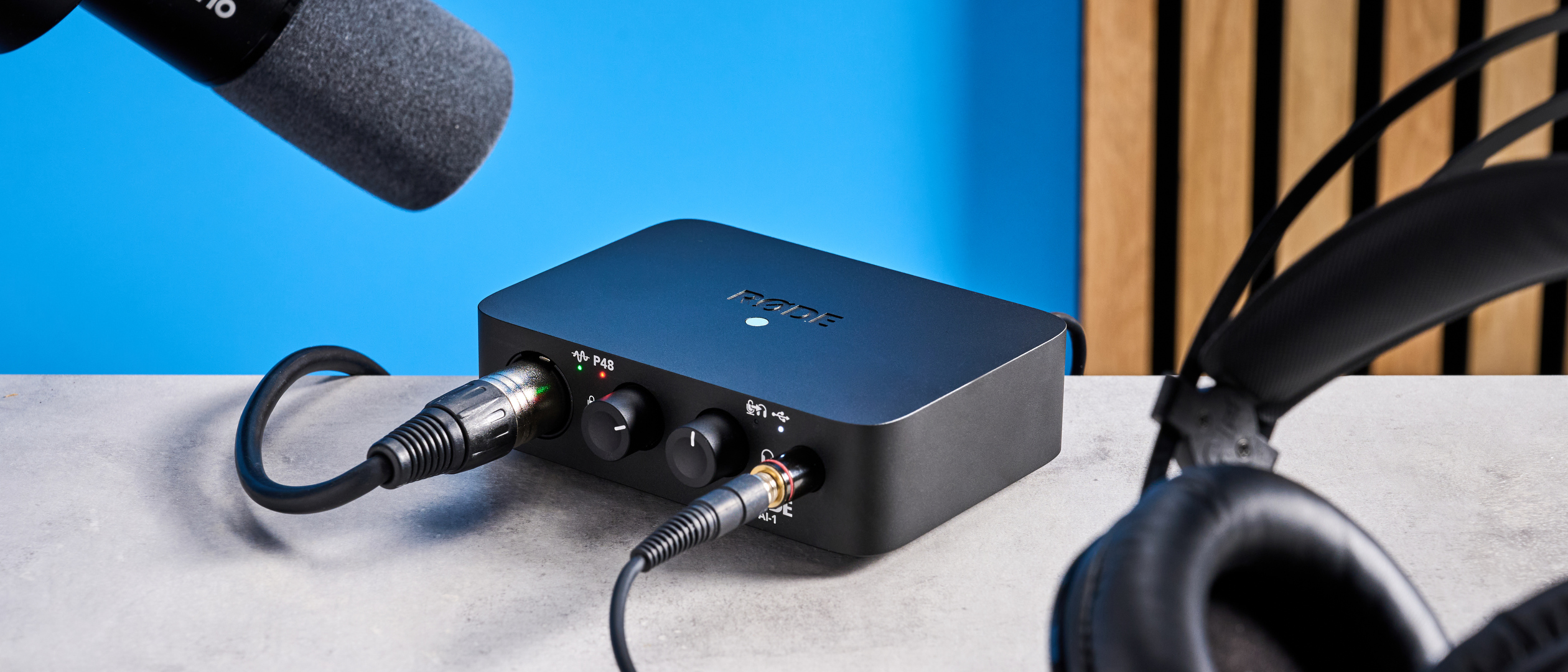Tom's Guide Verdict
The Rode AI-1 is a fantastic audio interface that’s both incredibly compact and incredibly portable. While its single XLR input limits its versatility, it excels at its core function, which is digitalizing analog gear. For those seeking the simplest and most straightforward audio interface, I’d recommend the AI-1 wholeheartedly.
Pros
- +
Compact and portable
- +
Well-made and high-quality
- +
Super easy to use
- +
High-res 24-bit sound quality
Cons
- -
Only one input
Why you can trust Tom's Guide
The Rode AI-1 is one of the best beginner-friendly audio interfaces out there, hands down. The AI-1 is so easy to use straight out of the box and has a foolproof design. While there’s only one XLR input, this is a compact audio interface designed for podcasters and home musicians, so this should be all you need to get up and running.
There are also two ¼” speaker outputs and a ¼” headphone input for live monitoring. Everything simply works as it’s intended to. There’s a reason the AI-1 is so well-respected in the audio world.
I can’t lie, though, I do wish it had just one more input for more versatility. That said, the AI-1 is only $129, so it could be a worthy toss-up. I’ll discuss everything in detail in this Rode AI-1 review.
Rode AI-1 review: Cheat sheet
- What is it? An audio interface with one XLR input and two speaker outputs
- Who is it for? Podcasters and home musicians, beginners rather than professionals
- What does it cost? $129 / £129
- What do we like? Pretty much everything: it’s simple, easy, and just works
- What don’t we like? It’s great, but it doesn’t do anything spectacular
Rode AI-1 review: Specs
Rode AI-1 review: Price & availability

The Rode AI-1 is a beginner-friendly audio interface, and that’s reflected in the price. The AI-1 will set you back $129 from Amazon U.S. and £129 from Amazon U.K., which is $300 cheaper than Rode’s second-cheapest audio interface, the $489 Rodecaster Duo. However, if you’re looking to save as much $$$ as possible, you might want to consider the even cheaper $79 Rode AI Micro.
It’s not the most versatile of devices with its single input, so I’d only recommend it for those recording single tracks at a time — if you have multiple podcast guests or want to record multiple mic layers at once, you might want to check out the aforementioned Rodecaster Duo.
Rode AI-1 review: Design
The AI-1 looks very simple — because it is. But simple doesn’t mean boring. As with other Rode gear I’ve tested, the AI-1 is weighty and premium. The body is just 5 inches wide and 3 ½ inches deep, which meant it fit perfectly beside my MacBook Pro during testing. The compact size means the AI-1 will be at home in even the smallest bedroom studios.
On the front of the interface is the XLR input, headphone (¼”, not a 3.5mm) output, and two gain dials. There’s a tiny LED that glows red or orange if your levels are too high during recording, which I thought was a great way to warn me about clipping while live. These dials are smooth and feel lovely to turn; they're sturdy and well-made, and aren’t flimsy in the slightest. I had no issues jumping between the two quickly.
Get instant access to breaking news, the hottest reviews, great deals and helpful tips.
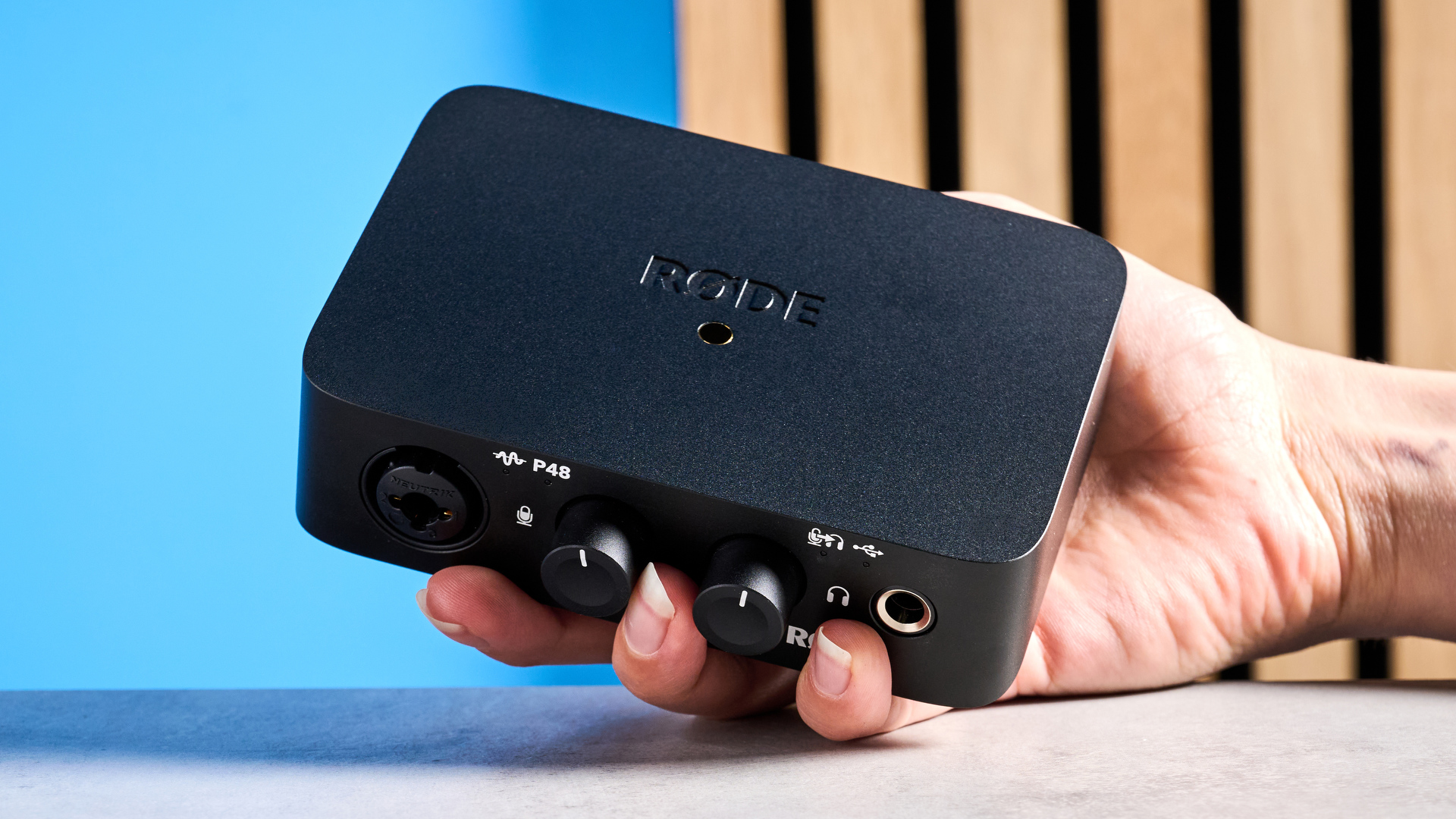
On the reverse, you’ll find the USB-C power and two ¼” headphone outputs.
As the AI-1 is a plug-and-play interface, it must be plugged into your computer or laptop. It has no internal power supply. I find this to be more of a help than a hindrance, as it means the AI-1 is portable and versatile.
Rode AI-1 review: Performance
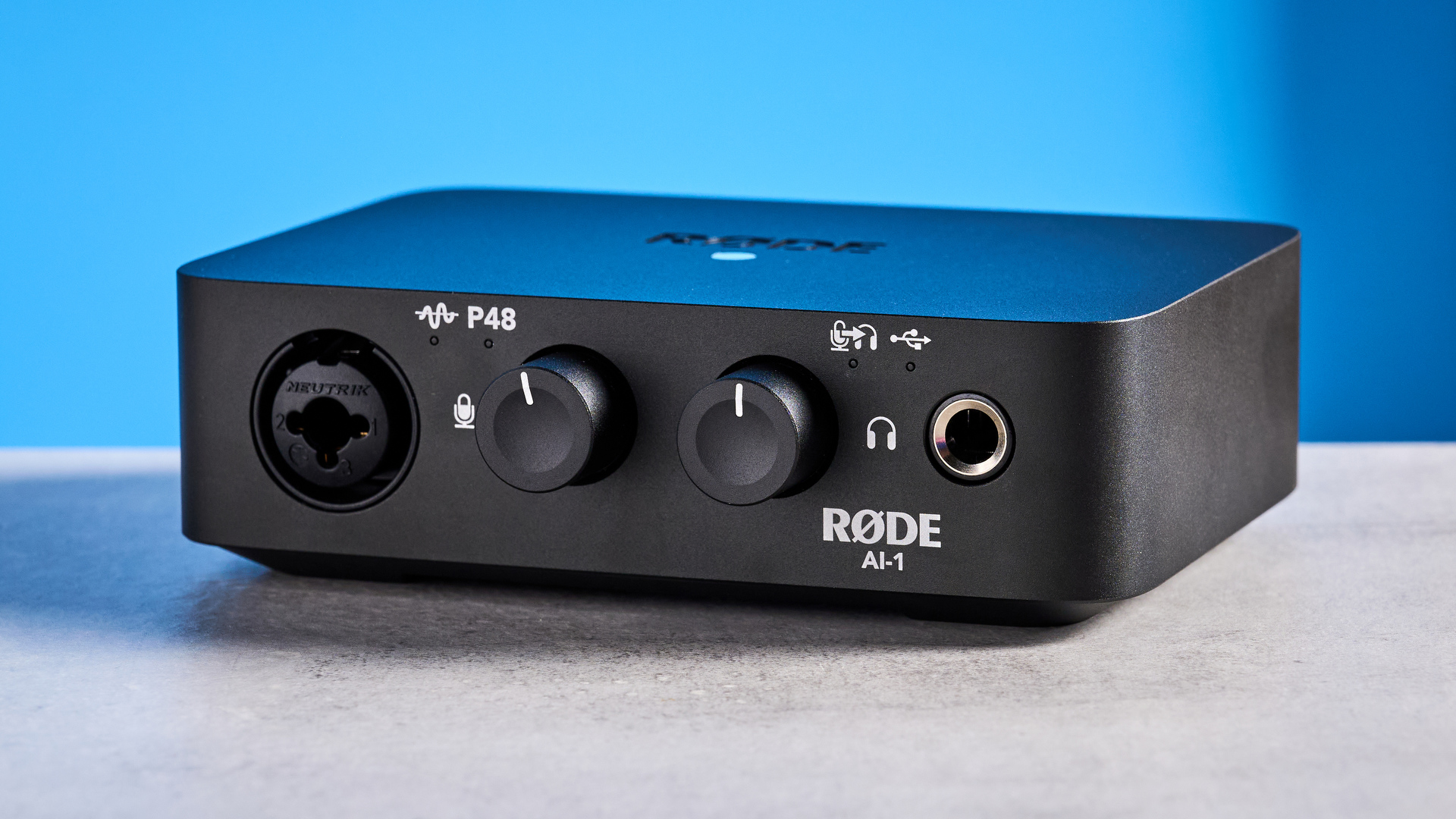
As you might expect, the Rode AI-1 performs like a high-quality, high-caliber product. I’ve yet to be disappointed by Rode. On top of being an audio interface, it can also be used as a headphone amp, although audiophiles are better off looking for a dedicated device.
If you have a high-quality mic, like the Rode PodMic ($150) or the Shure SM4 ($199), this is a sure-fire way to achieve near professional recording quality. Thanks to the 24-bit depth, the AI-1 provides a high-resolution sound. I didn’t have these available to me during testing, so I used a $40 Behringer. Remember, if you want professional recording quality, you’ll need one of the two mics I mentioned above. The Behringer mic I used was just to test the Rode AI-1, not to test mic quality.
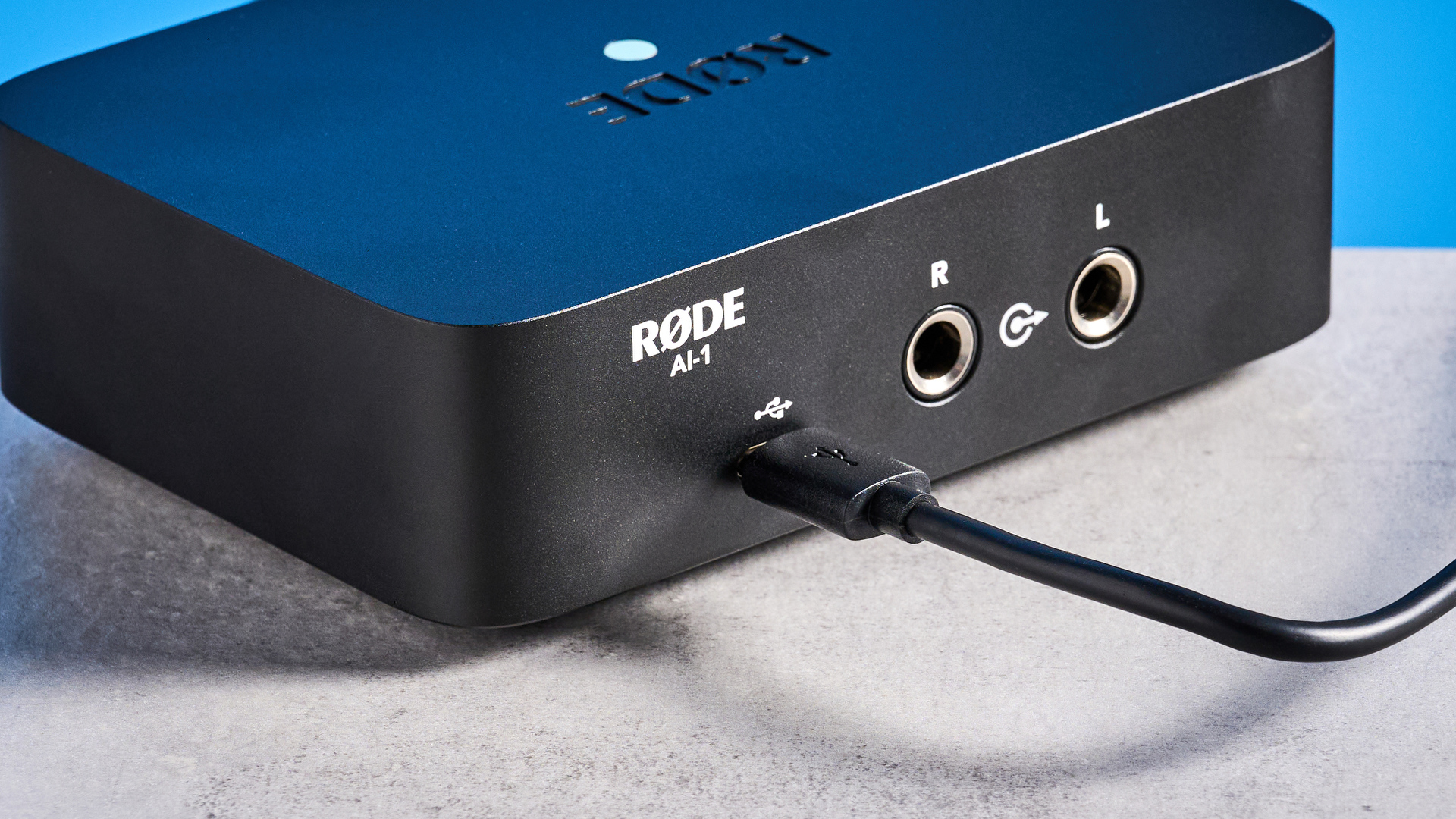
The AI-1 doesn’t do anything except act as a connection between an analog device and a computer. It has a high-quality DAC, for high-quality sound. It’s a straightforward, no-frills product, with straightforward, no-frills performance.
If you already have one of the best microphones like the Shure MV7+, Shure MV6, or the Shure MV7i (which is actually a microphone and audio interface in one, and is one of the best microphones I’ve ever used), you won’t need the Rode AI-1. This is an audio interface designed for analog instruments and mics.
If you’ve used the iconic Focusrite Scarlet 2i2, the AI-1 is basically a more compact version of that. If you need 2 channels, the Focusrite is your best choice, but if you need the one, then I’d save $100 and get the AI-1.
While there’s little room for improvement, there’s also very little room for error. The Rode AI-1 simply works. It connects up analog instruments, XLR mics, and allows clean, high-resolution recordings directly into your computer.
Rode AI-1 review: Verdict
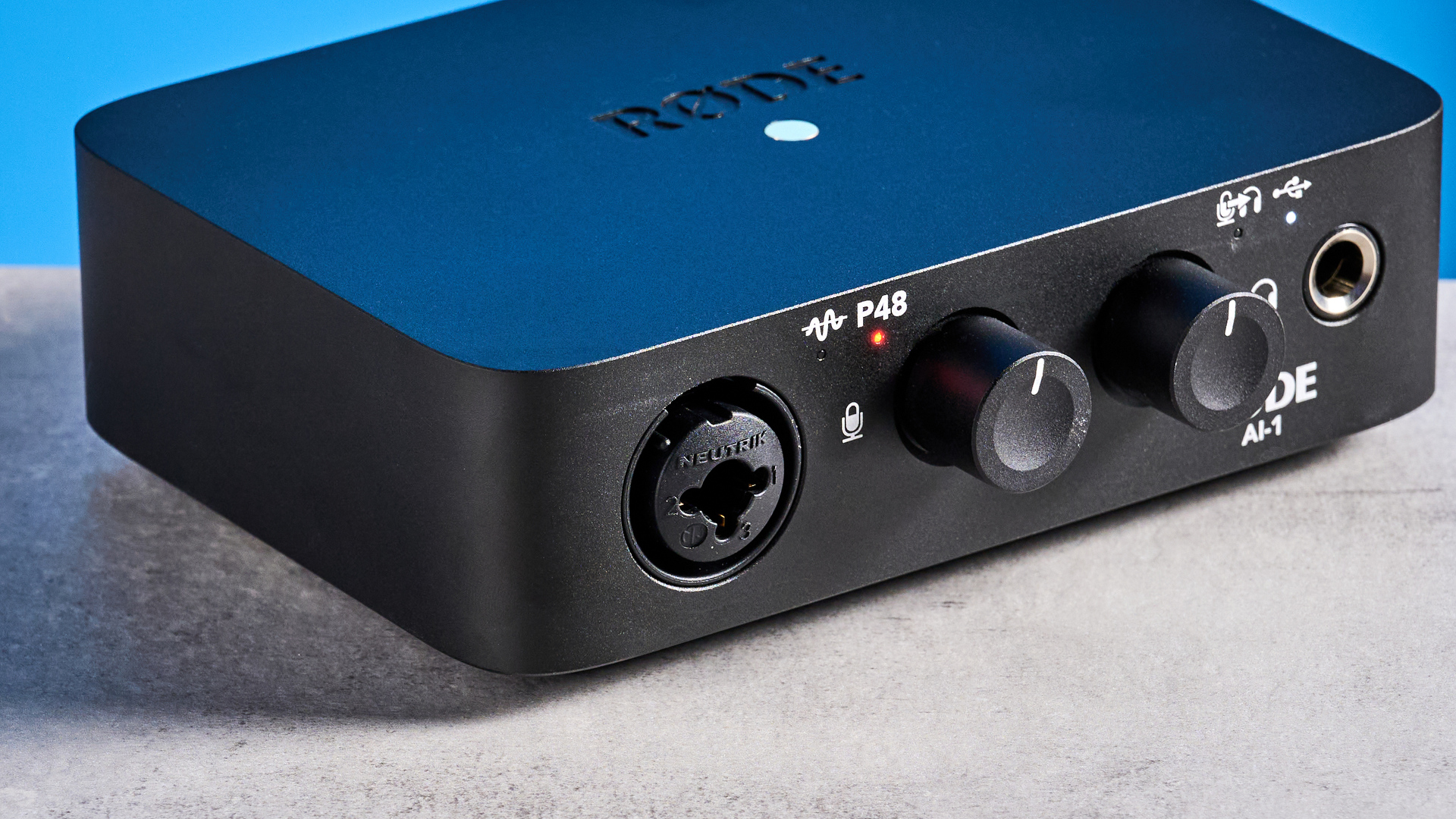
As I’ve said earlier, there’s very little room for error in the same way there’s very little room for improvement. The Rode AI-1 knows what it is and does its one job well. Considering the AI-1 only has one XLR input, it’s a little restricted in what it can and cannot do, but if you need one channel, it’s probably the best compact audio interface you can get.
If you want an audio interface and a mic in one, I’d check out the Shure MV7i I mentioned above. However, if you want the simplest and most straightforward option on the market, then there’s nothing like the Rode AI-1.

Erin Bashford is a senior writer at Tom's Guide, focusing on reviews. She has a Masters in Broadcast and Digital Journalism from the University of East Anglia. As an ex-barista, she knows her way around a coffee machine, and as a music lover, she's constantly chipping away at her dream of having a multi-room home sound system. In her spare time you can find her reading, practising yoga, writing, or stressing over today’s NYT Games.
You must confirm your public display name before commenting
Please logout and then login again, you will then be prompted to enter your display name.
